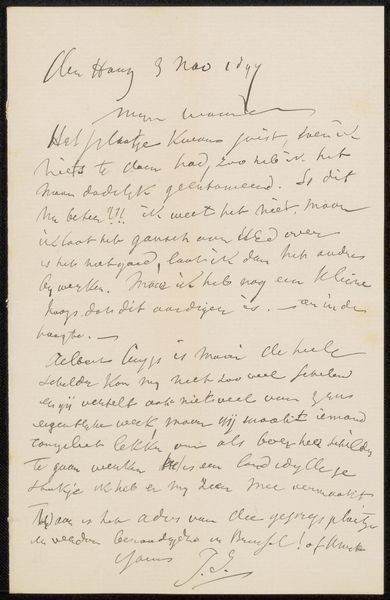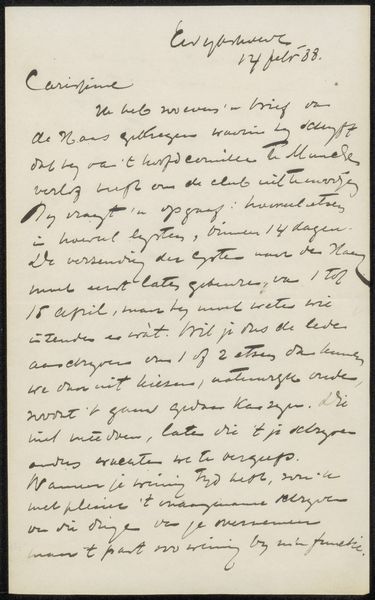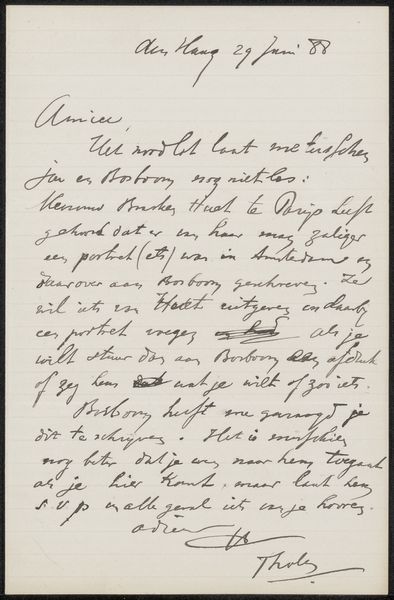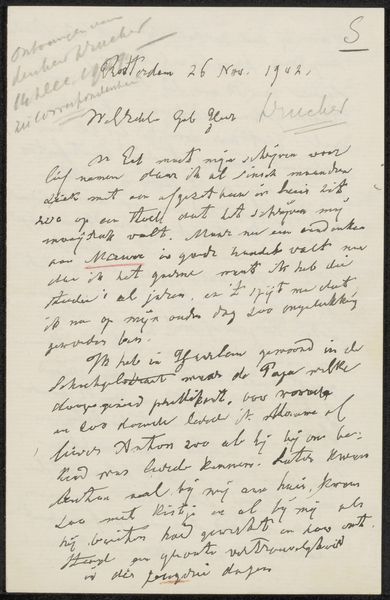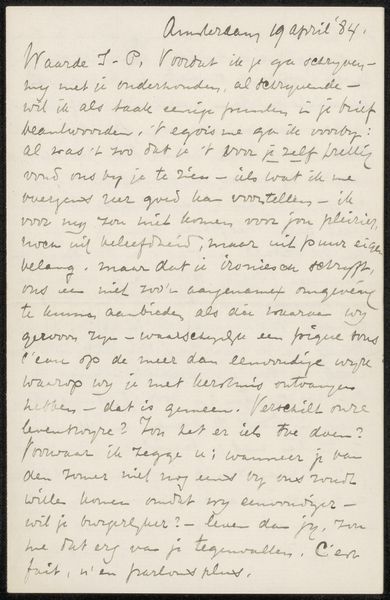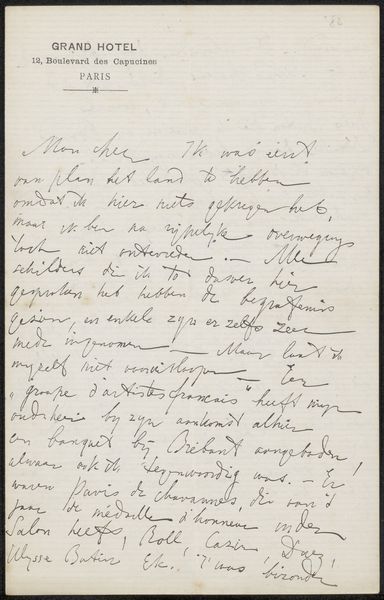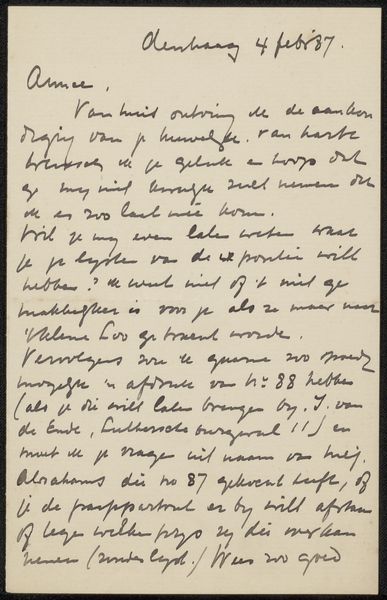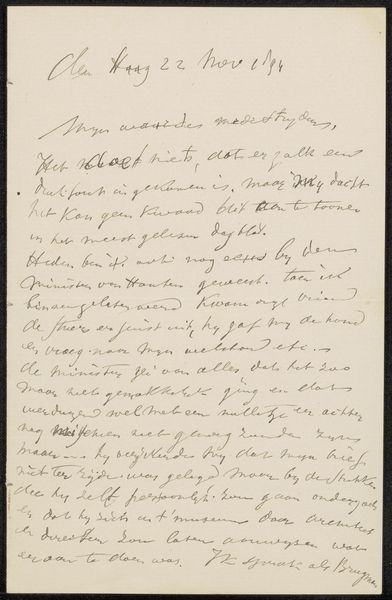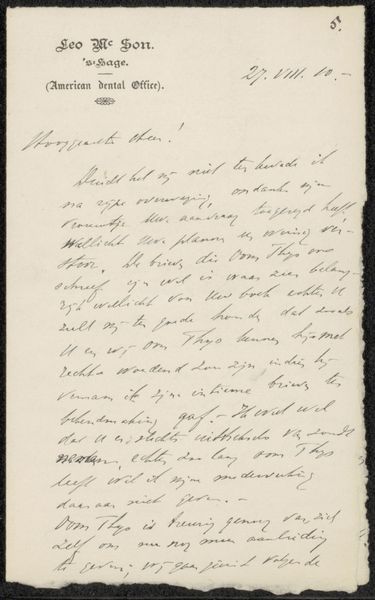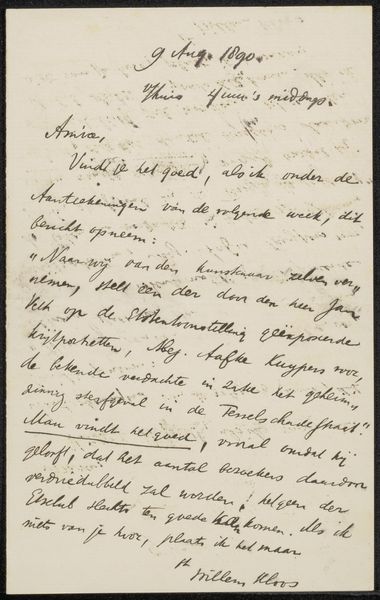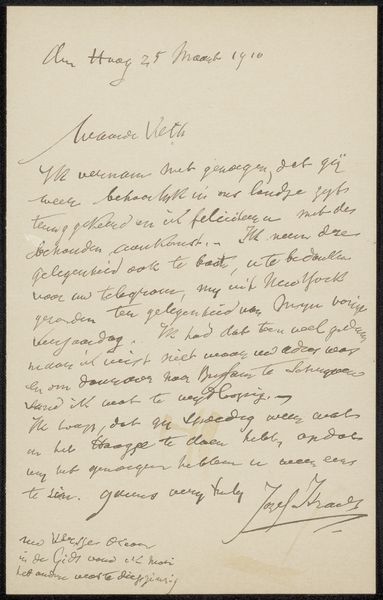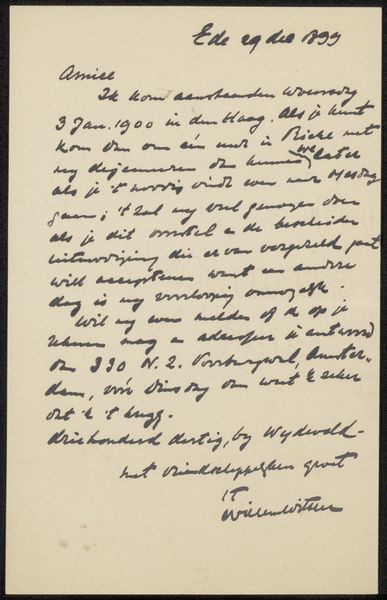
drawing, paper, ink
#
portrait
#
drawing
#
paper
#
ink
#
genre-painting
Copyright: Rijks Museum: Open Domain
Curator: This is a letter entitled "Brief aan Jan Veth," possibly dating from 1909 to 1925, crafted by Jozef Israëls. It resides in the Rijksmuseum's collection. It's rendered in ink on paper. The theme seems to veer toward genre painting within a portrait format. What's your immediate take on it? Editor: My first impression is a sense of immediacy—a snapshot of a private communication. The handwriting itself, the strokes of the ink, it makes me feel like I'm intruding, yet somehow, privileged to see the artist’s raw thought process. Curator: Absolutely. Looking at it through a historical lens, this letter offers us a glimpse into Israëls' network. Jan Veth was a prominent critic, art historian, and fellow artist. So the contents of this letter and their correspondence tell us a great deal about the artistic milieu of the time and Israëls' position within it. The Rijksmuseum holding this speaks to Israëls' own cultural significance and enduring artistic presence. Editor: And from a material perspective, it's fascinating to consider the relationship between the ink, the paper, and the artist’s hand. Each flourish, each潦草 mark tells us something about the act of creation. What type of ink was he using? How did the paper’s texture influence the stroke? These details reveal the craft involved. It bridges the gap between high art and the very visceral act of writing, of communicating in his hand. Curator: Considering it from the politics of imagery, there's also something to be said for the genre. Why choose a letter, a traditionally private medium, to portray not just artistic connections, but potentially aesthetic opinions or socio-political beliefs relevant at the time? How did this type of intimate exchange impact the artistic ecosystem of the late 19th and early 20th centuries? Editor: I agree, there is also something raw to experience knowing it would likely be mass produced or made commercially available during its day, versus existing behind glass as a unique or rarefied artifact today. So thinking about how the materiality has transformed from a quotidian or temporal material, something disposable potentially to this historical artifact deserving conservation speaks to values about process that continue to shift over time. Curator: Very true. I think understanding the medium provides crucial insights into Israëls and his art. This glimpse into a private interaction enriches our perspective immensely. Editor: It reminds us art isn't created in a vacuum, that material things and interpersonal processes shape what we consider important over time. Thank you!
Comments
No comments
Be the first to comment and join the conversation on the ultimate creative platform.
